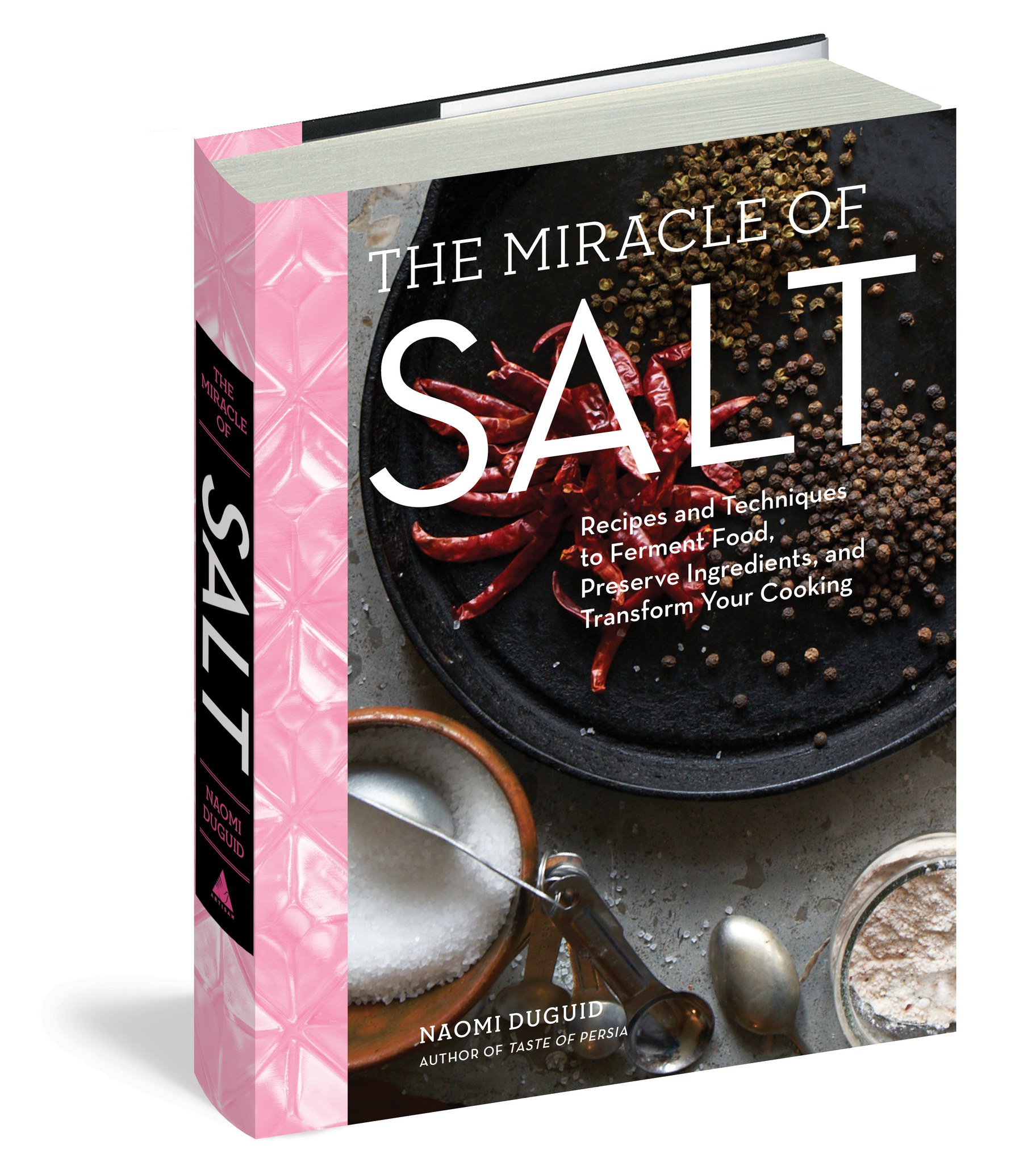An inequitable distribution of salt exists around the world and historically it promoted exchange,trade, and protest. Food and travel writer Naomi Duguid explains the subtleties of different salts found around the globe.
Miso-Espresso Caramel Custard
Serves 6 to 8
I love crème caramel, and that's why I decided to use miso to flavor the custard part of a rich crème caramel, rather than the caramel itself. Make it in a loaf pan, as here, or instead in ramekins (see the Note below).
After the custard has cooked in its water bath and chilled overnight, you have the pleasure of inverting it onto a serving platter and lifting off the loaf pan. The custard emerges with a gleaming top surface of red-brown caramel. Serve it in slices, drizzled with any extra caramel. I've freely adapted this method from David Lebovitz's recipe for a loaf-shaped flan.
The custard (made with milk and cream and plenty of eggs) is flavored with both miso and espresso. The salt in the miso mellows the bitter edge of the coffee. Use a red miso such as the one on page 109, or a store-bought miso. The miso-espresso custard tastes like a rich café au lait with a hint of mocha salt. The caramel adds sweetness and a pleasing touch of bitter.
Make this the day before you want to serve it. It will keep in the refrigerator for up to 4 days. Allow just under 2 hours for preparation plus cooking time the first time you make it.
Ingredients
- Butter for greasing the loaf pan
- 1 cup/200 grams granulated sugar
- ¼ cup/60 ml water
- 5 or 6 drops fresh lemon juice
- 2 tablespoons Red Miso (page 109 or store bought)
- 1 ½ cups/360 ml whole milk
- ¾ cup/180 ml strong espresso, at room temperature
- 1 cup/240 ml heavy cream
- 8 large eggs, at room temperature
- ¾ cup/150 grams granulated sugar
Instructions
- Lightly butter a 9-by-5-inch (23 by 13 cm) loaf pan and place it by your stovetop.
For the water bath, set a pan (such as a roasting pan) that the loaf pan fits into easily and that is at least 3 inches/7.5 cm deep onto a baking sheet. - To make the caramel, put the sugar in a heavy medium pot or large skillet and spread it out evenly. Add the water and lemon juice and set the pot over medium-high heat. As the sugar heats and melts, gently swirl the pot just enough to ensure that the water moistens all the sugar and that it is heating evenly. It will start to bubble and to turn a light brown and then very quickly progress to a medium brown (don't walk away). Watch carefully, and as soon as you see a wisp of smoke, remove the pot from the heat and quickly and very carefully pour the caramel into the buttered pan. It should flow and coat the bottom surface; tilt the pan gently back and forth if necessary.
- Place the loaf pan in the larger pan on the baking sheet, making sure it's level so that your caramel layer sets level, and set aside to cool.
- Place a rack in the lower third of the oven, preheat the oven to 300°F/150°C, and put a kettle on to boil.
- To make the custard, put the miso in a medium bowl, add about ½ cup/ 120 ml of the milk, and whisk until the miso is completely dissolved. Strain through a sieve set over a bowl, pressing the miso against the mesh to extract flavor; discard any solids. Transfer back to the medium bowl, add the rest of the milk, the espresso, and cream, and whisk again.
- Break the eggs into a medium bowl, add the sugar, and whisk vigorously for several minutes, until foamy. Continue whisking as you slowly add the milk mixture. Give it a final whisk and then pour it into the caramel-lined loaf pan.
- Carefully put the baking sheet with the two pans into the oven. Then carefully pour hot water from the kettle into the larger pan until it comes to just past halfway up the sides of the custard pan.
- Bake for 40 to 45 minutes. The custard is done when the top surface is set and, if you gently shake the pan, it undulates. If you have an instant-read thermometer, the internal temperature should be 175°F/82°C. Or insert a paring knife into the center of the custard; it should come out clean.
- Remove the baking sheet from the oven and leave the custard in the water bath for 30 minutes to cool and firm up, then lift the custard pan out and let it cool to room temperature on a cooling rack or on the counter.
- Cover loosely and refrigerate for at least 4 hours or, preferably, overnight. To serve the loaf, run a fine-bladed knife around all sides. Place a long platter or plate on top and flip the pan over to turn the flan out. The top will have a lovely rich sheen from the caramel. Cut into slices and serve immediately. (There may be extra caramel in the pan, which you can tip or scrape out onto the slices of custard.)
**NOTE: If you'd like to use individual ramekins, lightly grease eight 6-ounce/180 ml ramekins with butter. Set them in a large roasting pan that holds them comfortably and set it on a baking sheet. Divide the hot caramel evenly among the ramekins and set aside while you make the custard. Transfer the custard mixture to a jug or large measuring cup to make it easier to pour it into the ramekins. Put the baking sheet into the oven and add enough hot water to the roasting pan so it comes slightly more than halfway up the sides of the ramekins. They should be done in about 20 minutes; use a thermometer or the tests for doneness described above.
Excerpted from The Miracle of Salt by Naomi Duguid (Artisan Books). Copyright © 2022.

Food and travel writer Naomi Duguid visited the far corners of the globe including the Basque country of Spain and Maras in Peru to research how salt was collected and used. Photo by Laura Berman.

Techniques like fermentation, brining, and preservation all rely on one seasoning and are explored in “The Miracle of Salt. Photo courtesy of Artisan.
